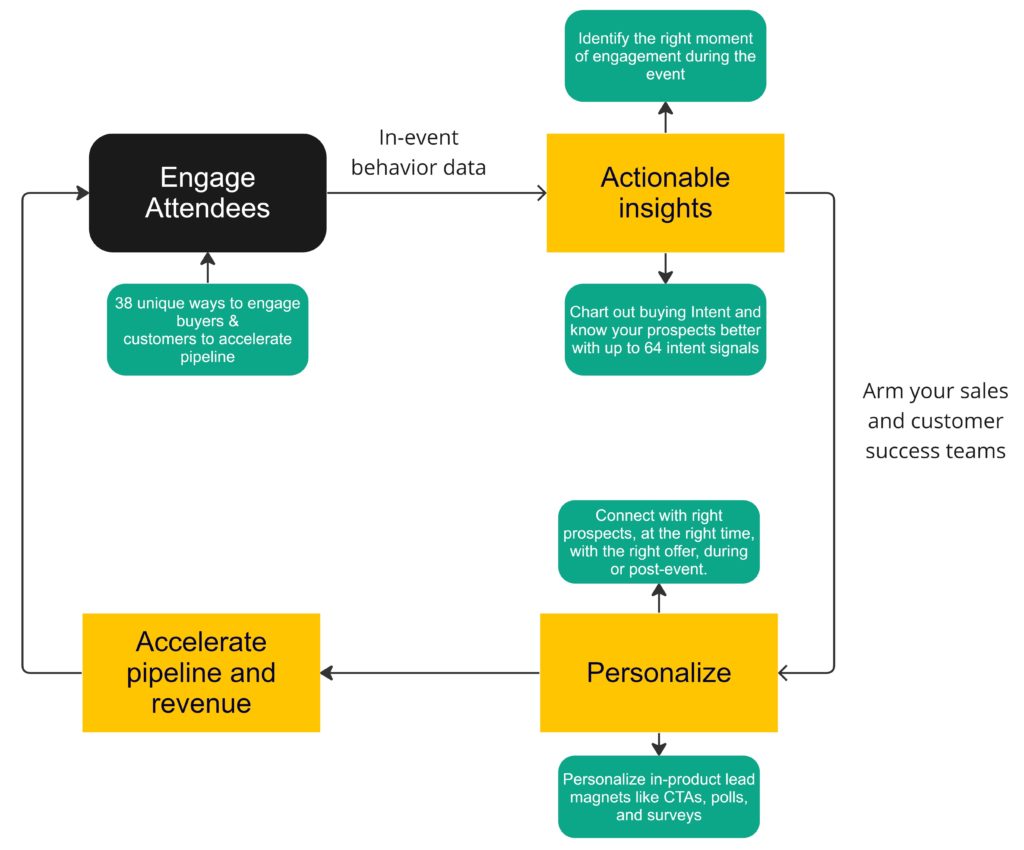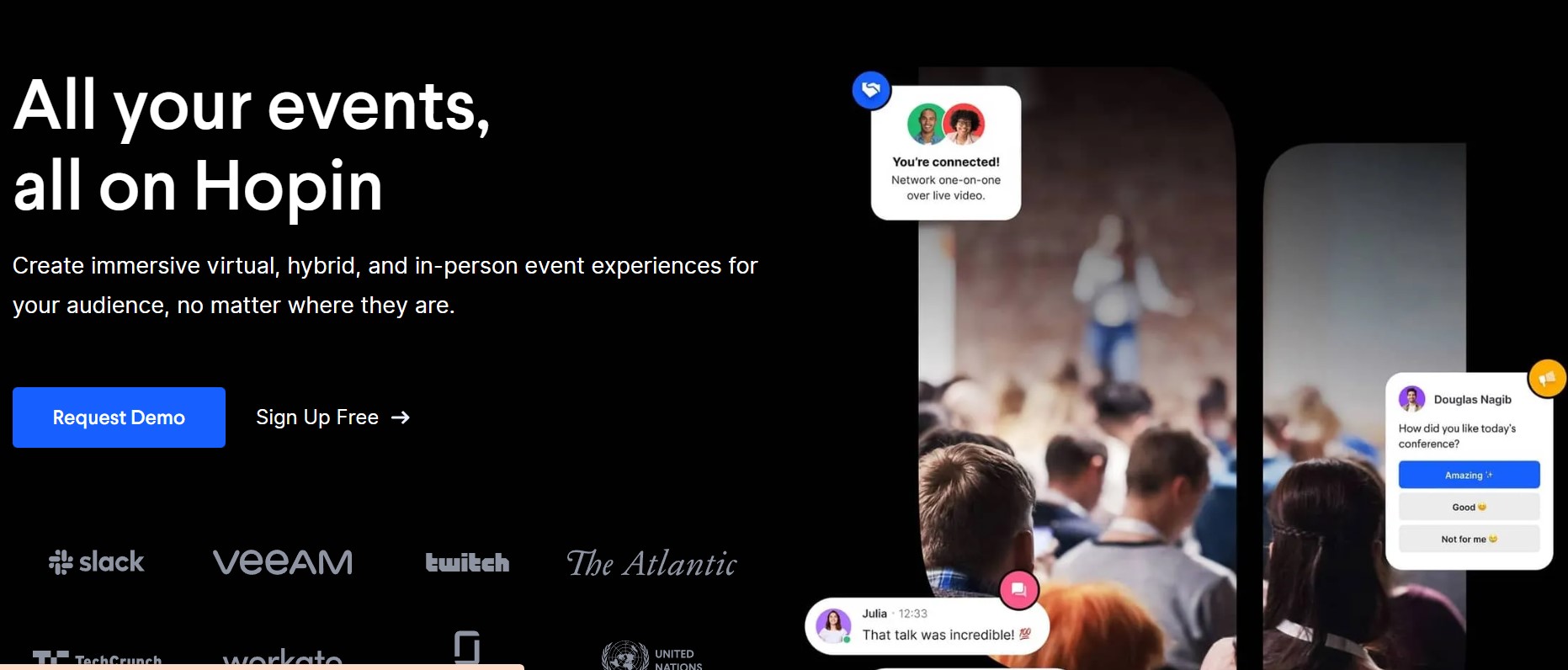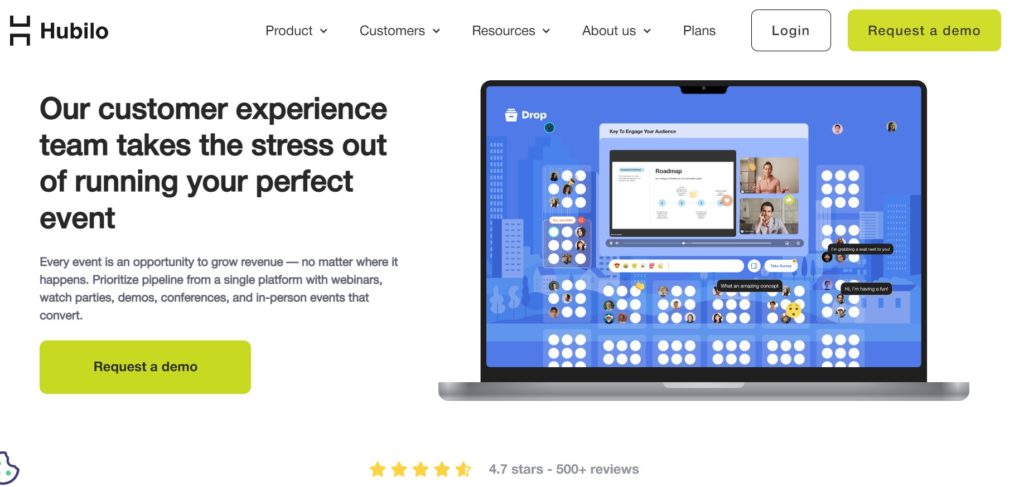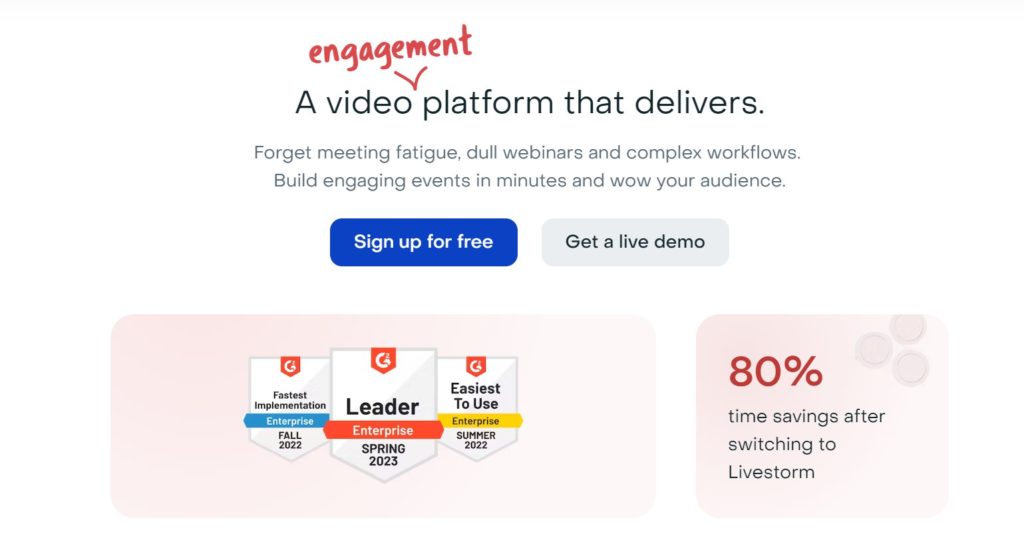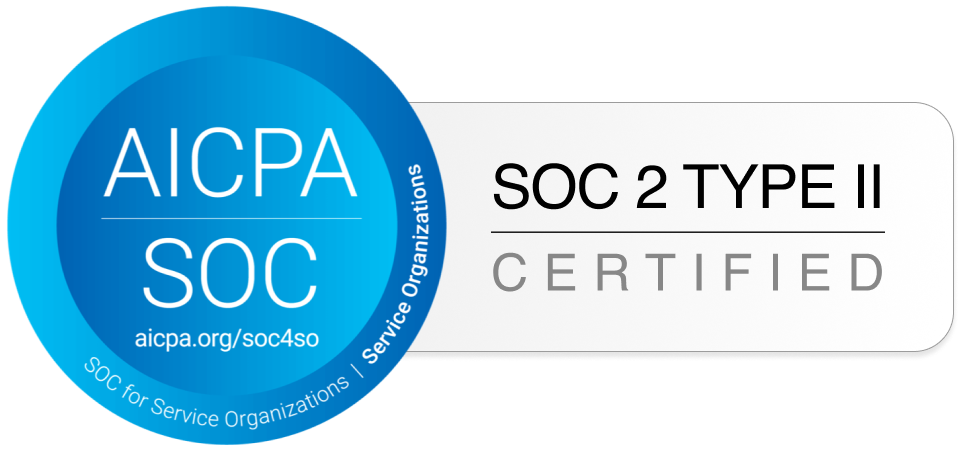1) Google Meet—the best Zoom alternative for small meetings and G suite users
Google Meet is undoubtedly one of the most user-friendly and efficient video conferencing tools available in the market. Its seamless and effortless interface lets you host impromptu sessions with just a link, making it a perfect tool for hassle-free meetings.
But what sets it apart from the competition is its focus on security and privacy. With enterprise-grade encryption, Google Meet ensures that your data is always secure, and your meetings are safeguarded from unauthorized access, giving you peace of mind.
The app and desktop versions of Google Meet are engineered to deliver a superior user experience. Whether you’re in the office or on the move, joining a meeting is just a few clicks away. With its user-friendly design, it’s easy to use for both new and experienced users alike.
G2 rating: 4.5
Pros
- The free version allows you to hold meetings with up to 100 participants for one hour
- No download required
- Link-based event entry
- Screen sharing
- Useful features like chats, raise-hands, screen-sharing, and emoji reactions
- Fully integrates with all the products in Google Workspace like calendars, docs, and sheets.
- Meeting recording
- Enterprise-level security and
- Breakout rooms with up to 25 participants
- Whiteboard for Collaboration
Cons
- Requires a Google account to join the online
- meeting
- Noise reduction and some other key features like expanded storage are only available in business and enterprise plans
Pricing
You’d need to get a custom quote for your business.
Google Meet Review on G2
“I have been using Google meet in my daily connect with teams to collaborate and the best part of Google meet is easy to share within the Google work ecosystem like hangout and Gmail easy to share the meeting links and it have very helpful background change filters available it helps to feel comfortable in any video meetings even in unset background. – Asif J.”
Verdict
Google Meet is an excellent video conferencing tool for businesses that use Google Workspace. It integrates well with other Google apps, is highly scalable, and offers advanced security features. Its user-friendly interface helps teams collaborate more effectively, enhancing productivity.
2) BluJeans—for productive internal team meetings
As an alternative to Zoom, it competes with Zoom’s meeting products such as Zoom One. However, what sets it apart is its unique ability to capture and share meeting highlights, and assign actions directly from the meeting, which can enhance team productivity over video calls by allowing teams to easily review important moments and tasks from their meetings.
G2 rating: 4.3
Pros
- Enterprise-grade security
- High-rated support
- Screen sharing
- Automatically capture and share meeting highlights on Slack
- Assign and track tasks right through the platform during the meeting
- Hi-fi audio and video
- Dolby-powered voice and video
- Fully browser-based
Cons
- The free video conferencing solution only allows up to 25 participants
- It can be hard for people outside the organization to dial into the calls
Pricing
Free | Blujeans Standard | BluJeans Pro | BluJeans Enterprise |
0 USD/month | 9.99 USD/month | 13.99 USD/month | 16.66 USD/month |
BluJeans Review on G2
“I love the recording capabilities because we are able to reference data in future.
The audio spatial technology.
It has outstanding audio and video quality.Breakout sessions. – Divit G.”
Verdict
BluJeans is the perfect Zoom alternative for small teams that need an extra oomph of productivity features embedded right into their meeting software. Plus, it is relatively cheaper to get started with and comes with a freemium offering that lets you try the product before committing.
3) Microsoft Teams—perfect for collaboration and productivity
Microsoft Teams vs Zoom Meetings is a perpetual debate in the corporate world. Both platforms are great at video conferencing, but Teams take it a notch ahead because of its ecosystem of tools that are purpose-built for productivity.
As a Zoom alternative Microsoft Teams offers to replicate the entire workspace experience into one platform with chats, file-sharing, and integrations with apps like PowerBI. Think of it as an amalgamation of Slack, DropBox, and Zoom, all in one place.
Other pros
- Convenient for Enterprises and Businesses using the Microsoft ecosystem
- Raise hands
- Customized backgrounds
- Chat for participants
- Integration with the Microsoft Office ecosystem
- Upto 1TB of storage plans
- Breakout rooms
- Guest access
Cons
Microsoft Teams Review on G2
“Microsoft Teams has been a vital part of our team interaction daily. Especially for the team members working remotely, this tool is beneficial in connecting in real-time. We have quick chats, calls, and meetings so easily.
It is a kind of in-house connecting network. Meeting Invites are fixed with entering details and invites are sent and notified through mail. The consent of attendees can be confirmed and the availability of attendees can also be checked.
I like the feature of recording a meeting and later sharing it with someone who could not join. It easily integrates with Microsoft Outlook and 365. – Sheeba T.”
Verdict
Microsoft Teams is a great alternative to Zoom. It offers similar features such as video and audio calls, screen sharing, and chat messaging. Additionally, it integrates well with other Microsoft products, such as Office and OneDrive, making it a convenient choice for those already using Microsoft services.
However, the user interface can be a bit complex for some users, and it may require a bit of learning to navigate all of its features. Overall, if you’re looking for a reliable video conferencing tool with robust collaboration features, Microsoft Teams is worth considering.
4) GoTo Meeting
GoTo Meeting has features similar to Zoom, but the only edge that it may have over Zoom is its cloud storage model. You get unlimited cloud storage for your meeting recordings, and a much larger storage plan while paying less than what you would pay for Zoom meetings.
Other than that, GoTo Meeting is also focused on providing a more secure, and minimalist meeting tool, that’s super easy to use.
Pros
- Cheaper than Zoom
- More cloud storage for meeting recordings
- Better security
- Professional plans start at 12 USD, and Business plan costs 16 USD/month. Which is considerably cheaper than Zoom meeting
- GoTo Meetings also transcribes the meetings, and identify highlights, and key sections of the conversation. Putting it ahead of Zoom meetings on this front.
Cons
- Clunky whiteboard experience
- Zoom might offer a more high-quality video experience for larger meetings
- You might get a better screen-sharing experience with Zoom
- Lesser integrations than Zoom
Pricing
Go to Meeting presents three distinct plans: professional at $12, business at $16, and enterprise, which requires you to contact the seller for pricing.
GoTo Meeting Review on G2
“My team and I learned the hard way that virtual meetings were a complete disaster a few years ago during the pandemic. Some of the tools we tested were cut again and again, others were so intricate that it seemed like a computer science degree was needed to handle them and others did not achieve the results we expected. Well, that was until a colleague mentioned GoTo Meeting. I was surprised by the stability of the connection when we first used it. There were no interruptions, delays or frustrating slow motion. Everything was clear: the audio, video and screen sharing feature. Whenever I had to do a presentation or demonstration, screen sharing quickly became one of my favorite features. As incredible as it may seem, all I had to do was show my screen to simplify a really complicated concept. The most important thing is that everything went perfectly. –
Rohit A.”
Verdict
Now the question is, where does the GoTo Meeting fit as a Zoom alternative, and which one should you choose?
GoTo Meeting is dependable and provides excellent security measures. However, it does not offer many features that promote teamwork and collaboration. Nevertheless, if you require an affordable and straightforward platform for brief meetings, then GoTo Meeting might be suitable for your needs.
5) RingCentral
RingCentral and Zoom both come with similar offerings to solve the internal communication needs of corporates. However, they both differ in their vision and areas of focus. While Zoom focuses entirely on creating video-first experiences, RingCentral main area of focus remains voice-first.
But they both offer capable video-conferencing and virtual meeting solutions. As a Zoom alternative, RingCentral gives Zoom tough competition in both, voice-first and video communications.
G2 ratings: 4.1
Pros
- RingCentral’s free plan can accommodate up to 100 participants and lets you host up to 24 hours of meetings.
- RingCentral offers a Slack-like communications platform.
- You can assign tasks directly from the video meetings, and take notes.
- Integrations with Microsoft 365, Google Suit, Outlook Calendar, and more. It also has some integrations with CRMs and other third-party apps to blend into your tech stack.
Cons
- No whiteboards
- No breakout rooms
Pricing
RingCentral’s pricing structure is diverse. It offers Core for $20, Advanced for $25, and Ultra for $35 if paid annually. Also, it provides Video Pro free, Video Pro+ at $10, Webinar at $30, and Rooms at $39.
RingCentral Review on G2
“I love that we can program scripted texts for routine initial contact and follow ups. Easy to set up. Customer service is helpful and responsive. I use this app daily and it makes my job much easier to keep track of all interactions. – Mildred B.”
Verdict
Zoom and RingCentral are both strong contenders for your next video-conferencing app. However, RingCentral places a greater emphasis on VoIP and less on video communications, making it a suitable Zoom alternative.
If you need a video-meeting app to integrate with your business’s operations, Zoom might be a better choice as it facilitates onboarding guests and offers a familiar experience due to its popularity. However, if your internal communication already uses RingCentral’s VoIP solutions, then RingCentral is a no-brainer.
6) WebEx for Meetings
Webex offers highly advanced features and security as a Zoom alternative for Zoom meetings.
Webex meetings directly compete with Zoom one plans, and stand out with its provision of features like chat threads, Apple Carplay integration to attend meetings on the go, and end-to-end encryption available on the free plan.
Pros
- Slack-like message threads and message quoting
- Advanced encryption even in the free plan
- Breakout rooms in the free plan
- Sharing audio clips
- Loom-like Video message sharing
- Apple Carplay integration
- Over 81 videos in the grid
- Can host up to 1000 attendees in enterprise plans
Cons
- Looking at some user reviews on G2, it seems like that Webex as a platform might have a steeper learning curve.
- While Webex is praised for its consistency and reliability, some users on G2 have complained about occasional lags, screen freezes, and dropped calls.
Pricing
Free | Starter | Business | Enterprise |
$0 | $144 | $270 | Contact Seller |
WebEx for Meetings Review on G2
“WebX is a very handy application for students like me. It is very easy to join the meetings and the user interface is very easy to use. I personally loved its user interface and its settings are phenomenal. WebX provides a variety of options that are very useful to me as a student. – Arushi M.”
Verdict
Webex is the platform for anyone who prioritizes security over features. With end-to-end encryption and fedRAMP authorization, Webex delivers one of the highest levels of security available on a video-conferencing platform.
Moreover, if your company already uses Cisco solutions for conference rooms, then Webex would fit right into your existing tech stack, easing out the flow.
Thus as a Zoom alternative, Webex is a strong choice for enterprises or businesses looking for highly secure solutions.
Looking for a better Zoom alternative? Try Airmeet
Airmeet is one of the best webinars and virtual event platforms. It’s built from the ground-up to let your craft the most memorable and amazing virtual event experiences possible. Plus, you get deep insights and lead-scoring signals that lets your sales team book more meetings and close more business.
Join us for a free walkthrough of Airmeet, and learn how it can help you 2X your webinar and virtual event ROI.




